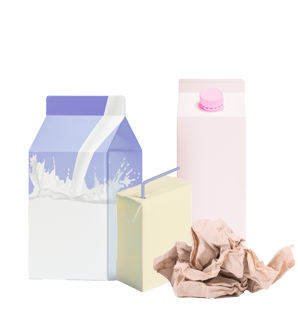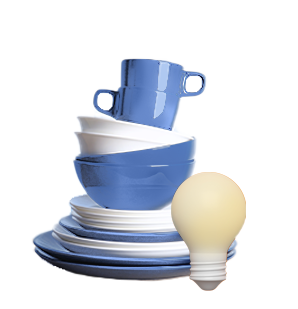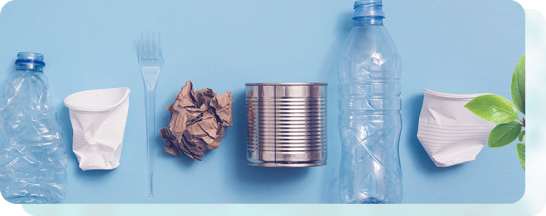What should each bin contain?
What should each bin contain?
Despite the fact that we have been recycling for many years and that our knowledge and awareness are expanding, a lot of things still end up in the incorrect bin and are thus considered to be "improper" waste.
Continue reading if you want to understand how to properly segregate and have any remaining questions regarding what goes where.
Yellow Bin
The number of plastic bottles, cartons, and cans recycled annually per resident rises.
A third of the population is still unsure of the precise locations of each category of waste, though, and the yellow bin is one of them that causes greater uncertainty. What you can dispose of in this bin to solve your doubts is described here.
What is disposed of in the yellow bin?
We must place bottles, plastic packaging, metal containers, and cartons inside the yelow bin, such as:

-
Plastic bottles
-
Preserve and beverage cans
-
Lids and caps made of plastic, aluminium, and metal
-
Aluminium trays
-
Plastic wrap and foil
-
Sprays
-
Deodorant cans
-
Plastic bags (except garbage bags)
-
Covers for yogurt pots
-
Milk, juices, soups, and other cartons
-
Polystyrene trays
-
Tubes of toothpaste
-
Ceramic containers
-
Wooden packaging for fruits and vegetables
-
Wooden packaging for wines and spirits
Blue Bin
The blue bin has been in use in Spain for 25 years, much like the yellow bin.
Since it is just for paper and cardboard, this bin is typically simple to identify and use. However, this is what you ought to include.
Avoid the most common recycling mistakes
Do I place this in the blue bin, the yellow bin, the other waste bin, or the organic bin? This is a common thought while disposing of waste.
It is typical for more waste to wind up in the incorrect bin as our recycling habit grows. The incorrect waste found in each type of bin is described below.
Mistakes in the yellow bin

It is a frequent misconception that everything made of plastic and no longer useful to us belongs in the yellow bin. This, however, is not always the case.
Keep in mind that only plastic bottles, cans, and cartons should be disposed of in the yellow bin. Therefore, never throw the following in it:
-
Plastic toys should be disposed of in the other waste bin, although some NGOs also collect discarded toys for charitable causes.
-
Bottles and pacifiers are also disposed of in the other waste bin.
-
Cooking tools, such as a spatula or a colander, that lose their utility over time and usage.
-
Plastic buckets, such as beach buckets, can be used as containers at home, but if they are no longer functional, they should be disposed of in the other waste bin.
Mistakes in the blue bin

We place cardboard and paper packaging inside of it. However, occasionally we fail due to the material composition of certain waste:
- We frequently make mistakes with the carton of milk or drink. We place it in the blue bien because we believe it to be cardboard. However, this is false. Since the carton ismade of cardboard, plastic, and metal, it is always disposed of in the yellow bien.
- Daily waste, such as used paper towels or dirty napkins, should be disposed of in the organic waste bin. Additionally, diapers frequently constitute incorrect waste in this bin, the other waste bin should be used in its place (tha gray one).
Mistakes in the green bin

Making the distinction between glass and crystal is crucial. Crystal waste is frequently put in the green bin for disposal, albeit this is a mistake. The green bin should only contain glass!
The most common mistakes are:
- The light bulbs must be taken to a recycling centre or collection facility; they cannot be placed in the green bin.
- Other items that should be recycled in a recycling centre or collection facility are mirrors, ashtrays, cups, and dishware.
Materials for recycling correctly

Bookmark
With this bookmark you will learn everything you need to know about how to separate waste correctly.
It will help you identify which type of materials should go in which container.

Brochure
Our brochure provides clear information on how to correctly separate waste in the right containers. Know what type of materials correspond to each container, ensuring responsible waste management.

Poster
Our recycling poster is the perfect addition to your kitchen, office or any other place where you need a visual reminder on how to properly separate waste. Download it and place it in a visible space to start recycling efficiently!
You might also be interested in

What is Recyclable?
What is Recyclable?
Not every material can be recycled. What are they, and what are they not?

Advantages to Recycling
Advantages to Recycling
Compared to the modest effort involved, it provides many benefits.
